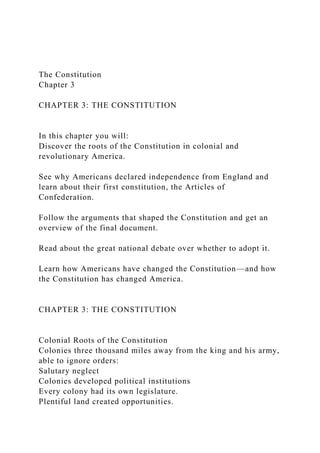This chapter discusses the Constitution and the system of federalism it established in the United States. It describes how power is shared between the national and state governments, with some powers reserved for each. Over time, the division of power has evolved, moving from a stricter "dual federalism" to a more cooperative model where governments work together. The chapter outlines the key articles and powers laid out in the Constitution, as well as how federalism aims to balance national unity with local control and innovation across states.























